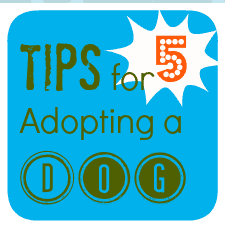Get a full veterinary assessment in the first few days.
Shelters and rescue groups work hard to ensure that all puppies and dogs are healthy before they are adopted. However, because the dogs have been in a shelter environment, it is possible that something may have been overlooked. Take your new dog to your trusted veterinarian and get a full workup to be sure there are no undiagnosed health issues. The most common challenge with dogs coming straight out of a shelter (as opposed to a foster home) is diarrhea that requires a few days of antibiotics to clear up completely. Young puppies may also require booster shots for rabies and other standard vaccinations.
Expect a transition period of one to two weeks.
Any dog moving from a shelter or rescue environment into a home is going to need an adjustment period. Try to imagine how you might feel coming out of a bare prison cell and into a home full of adults and kids, new smells, and new things. It usually takes a dog one to two weeks to settle down, feel at home, and show his true personality. Your job during this time is to provide love, stability, and encouragement. It is unrealistic to expect training or any other serious lessons to take hold during this transition period. Your goal during this time is to create a bond with your new dog so that he knows he can trust you.
Be prepared with a crate, a leash, chew toys, and training treats.
All new dogs, especially puppies, need to be shown what is—and is not—okay for them to do in a new home. They don’t need discipline. They need education. Crate training is ideal because the crate gives the dog his own space where he feels safe, and where you know that he isn’t going to hurt himself or wreck your house. It’s a win-win. Also have plenty of chew toys and teething bones, especially for puppies, so you can teach your dog to chew on those instead of on rugs or furniture. Training treats that are small and low-calorie should always be at the ready, too. Keep them in your pocket so that when your new dog does something good, you can reward him. Also keep your new dog on a leash at all times when outside your home. Until he knows his name and the command “come,” a leash is the only way that you will be able to get him back.
Create a daily routine to help with quick housebreaking and early training.
Dogs, including puppies, are creatures of routine. Start on Day One by teaching your dog that the first thing to do after waking is to go outside and make potty. Out of the crate, and out the back door, right in succession. Take him outside five or six times a day if you can during the first week, always rewarding him with a treat when he makes potty outdoors. Make going potty the last task before bedtime, too. If you stick with this routine, your dog will be housebroken faster. He will learn that if he wants treats all day long, then he has to keep going outside to go potty. He will also learn where the door is to the outside, so he can start to walk there on his own and alert you when he needs to go out.
Enroll in puppy kindergarten or beginner obedience classes.
Obedience school is a must for anyone who wants their dog to grow up well-behaved. It doesn’t matter if you’ve had ten dogs before this one. All dogs need training outside the home, in environments where there are distractions including other dogs. Your dog may be able to “stay” in your kitchen, but that’s not going to do you much good at a park full of people he wants to meet. Investing a little bit of time early-on at obedience school is the best thing you can do to ensure that your dog will be a great family member for many years to come. Take several courses if you can. Don’t stop at just one. The more time you spend on obedience during your dog’s first year with you, the easier your life is going to be in the long run.


Christina Karnes
Tuesday 16th of October 2012
Great tips!! I will keep these in mind when we start looking for a dog.